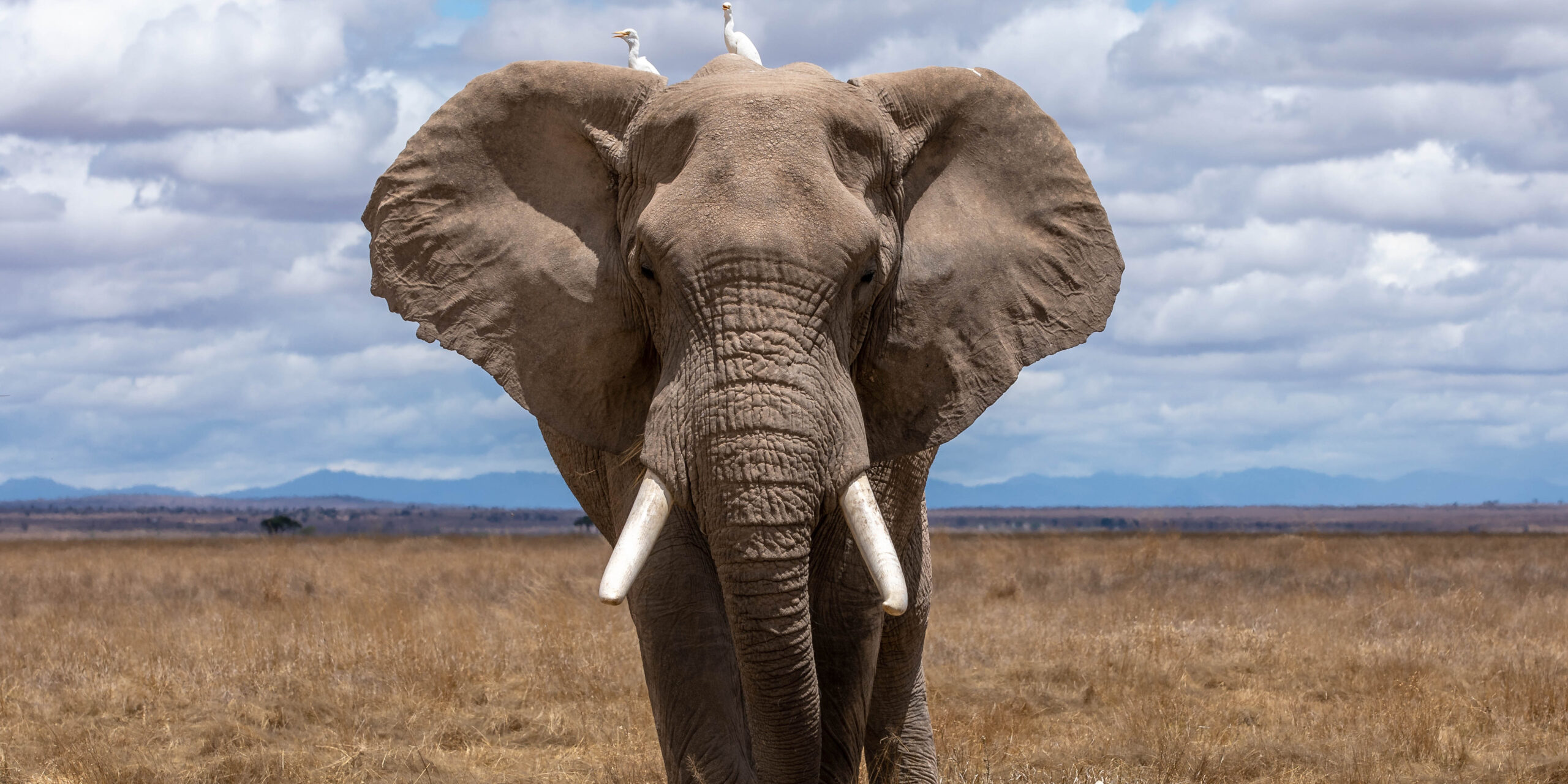Originally published 19 March 1995
“Elephants always remember,” Peter Finch says to Elizabeth Taylor in the 1954 film Elephant Walk.
Finch has brought his new wife to live on a tea plantation in Ceylon that he has inherited from his father. Perversely, the father had sited the house astride a path elephants have used for centuries to reach their watering hole.
In the film’s thrilling climax, drought-crazed elephants reclaim their walkway in a thunderous, bellowing stampede that reduces the house to rubble.
When I first watched the film in 1954, my sympathies were with Finch and Taylor. When I watched it again recently, I was rooting for the elephants.
In the intervening years, elephant populations plummeted. In 1979 the population of African elephants was estimated at 1.3 million (down by a factor of ten from 19th century levels). By 1989 the figure was 600,000 or fewer. Kenya lost 85 percent of its elephants in that single decade. In many parts of Africa, the carcasses of dead elephants — tusks removed by poachers — outnumber living animals.
The cause of this slaughter is ivory.
Since 1989, international trade in ivory has been banned by CITES (Convention on International Trade in Endangered Species). However, not all countries are parties to the convention, and others refuse to comply with the ban. Some African countries treat the tusks of elephants as a cash crop. The tusks can be harvested only by killing the elephants.
These great beautiful baggy-skinned beasts, the largest land mammals on Earth, are being driven towards extinction so that folks in Japan, Europe, and the United States can amuse and adorn themselves with ivory knickknacks.
The elephant’s plight is highlighted in recent books by elephant conservationists Ian and Oria Douglas-Hamilton, elephant researcher Cynthia Moss, wildlife biologist Douglas Chadwick, and National Audubon Society writer Roger DiSilvestro. These books make chilling reading. As instruments of public education, they may represent the elephant’s best hope for survival. The elephant can be saved only if consumer demand for ivory ceases.
But why should we be particularly concerned about saving elephants when every day many other species are driven to extinction by human activities? What makes the elephant more deserving of our consideration than the northern spotted owl or the snail darter, two creatures that ran afoul of economic development in this country? What makes elephants more deserving of compassion than the countless bird and insect species that expire with the rain forests?
That’s easy. We’re talking about Babar and Dumbo. We’re talking Hannibal crossing the Alps, P. T. Barnum’s Jumbo, and our first trip to the zoo. We’re talking Teddy Roosevelt on safari, posing proudly over his elephant kills, grandly confirming his (and our) macho prowess over the rest of nature. We’re talking about an animal that bulks as large in our imaginations as it does in real life.
If compassion won’t save the elephant, then the northern spotted owl and snail darter — or black rhino, peregrine falcon, giant panda, California condor — haven’t a prayer of surviving as a species.
So let’s get those elephant books into libraries and schools. Let a new generation of world citizen’s read Oria Douglas-Hamilton’s blood-soaked account of an officially sanctioned elephant “cull” in Zimbabwe — whole families of animals butchered for their tusks and meat, with nothing remaining of the adults but trunks and bones, and orphaned babies sold to circuses and zoos. She writes:
“I looked at one of the discarded trunks and wondered how many millions of years it must have taken to create such a miracle of evolution. Equipped with 50,000 muscles and controlled by a brain to match such complexity, it can wrench and push with tons of force. Yet, at the same time, it is capable of performing the most delicate operations, such as plucking a small seed-pod to pop in the mouth.
“The trunk has social functions too; caresses, sexual advances, reassurances, greetings and mutually intertwining hugs; and among males it can become a weapon for beating and grappling like wrestlers when tusks clash and each bull seeks to dominate in play or in earnest. And yet there it lay, amputated like so many elephant trunks I had seen all over Africa.”
A continent littered with elephant trunks!
But perhaps there is something better for the elephant’s cause than a few books by conservationists. Maybe there is material here for a Hollywood epic film—Elephant Walk II:
A group of African elephants is sorely tried by poachers. At last, they go on rampage, trampling the poachers’ camp. Then, trumpeting revenge, they gather to their numbers the half-million of so elephants still surviving in the world and, in reply to centuries of human depredations, rampage through the cities of Japan, Europe, and North America, smashing pianos, tipping over billiard tables, trampling Oriental statuettes, combs, dominoes, dice, chess pieces, toothpicks, cuff links, collar buttons, letter openers, barrettes, snuff boxes, and tissue dispensers, and along the way wreak havoc on homes, businesses, automobiles, shopping malls…



